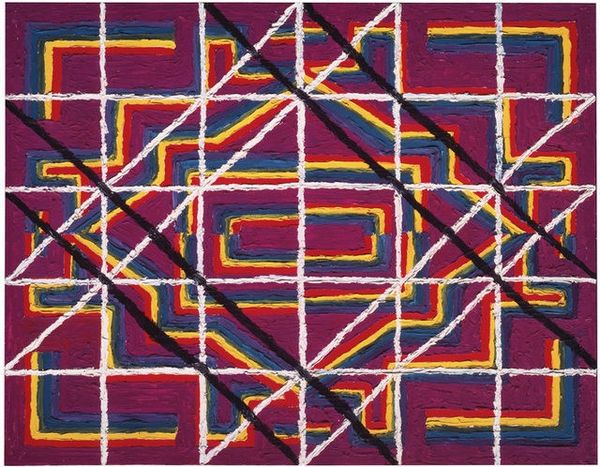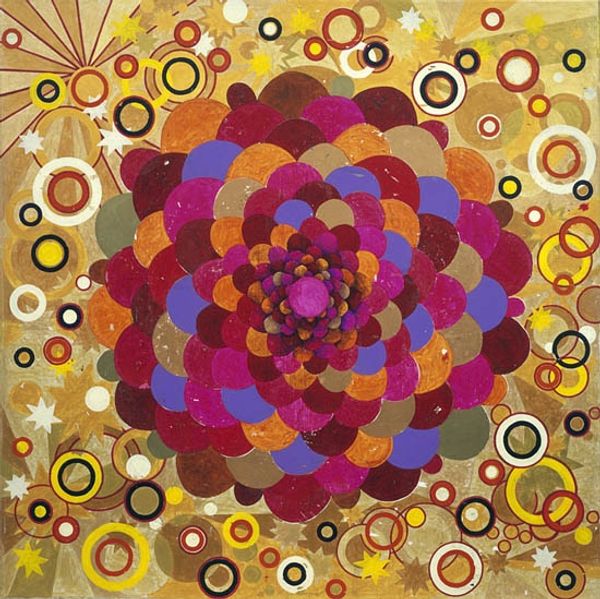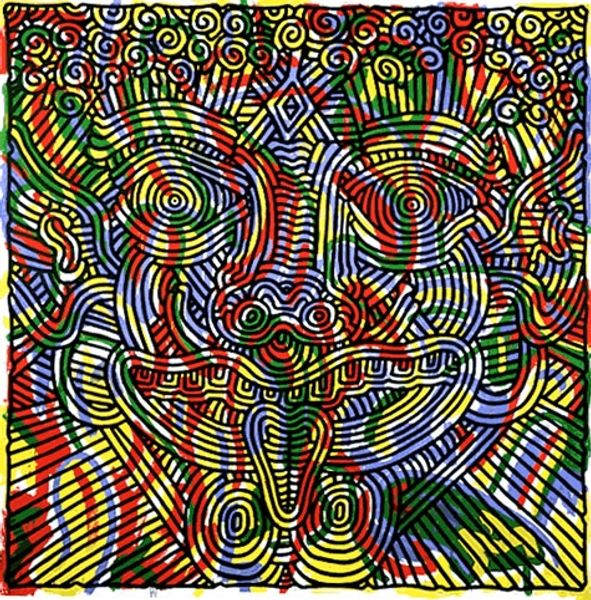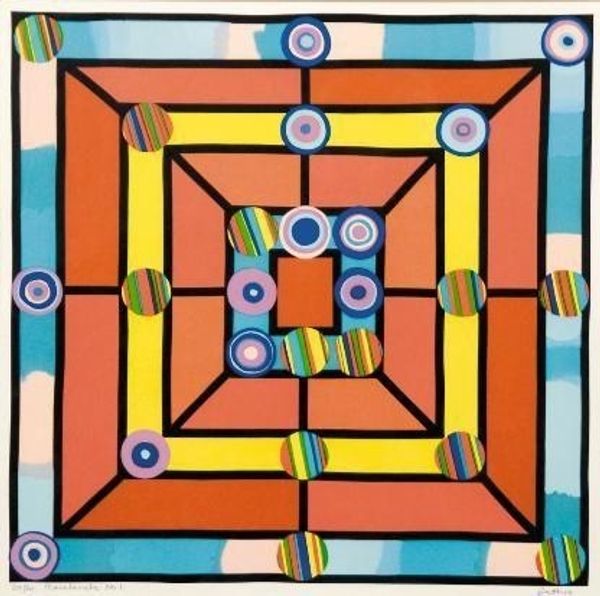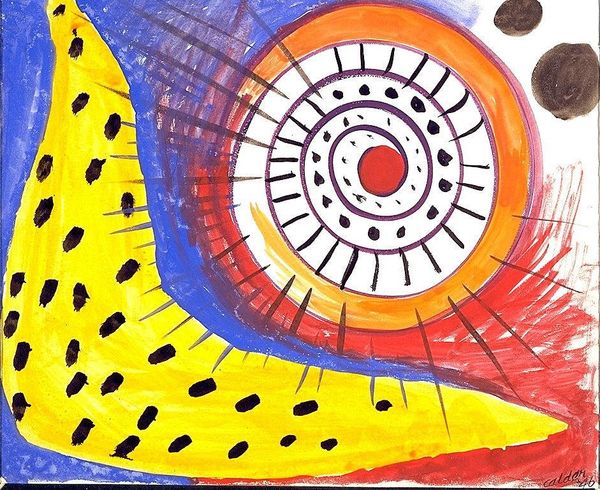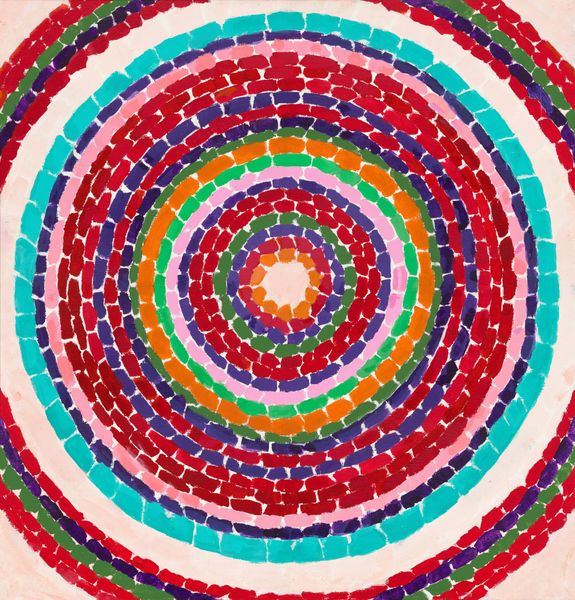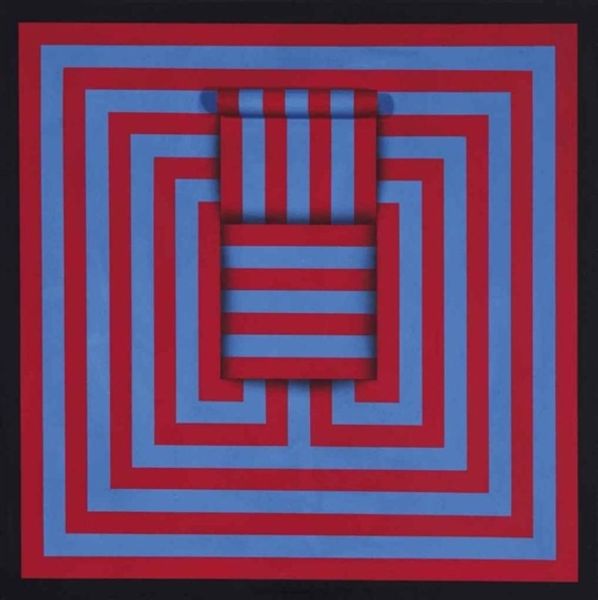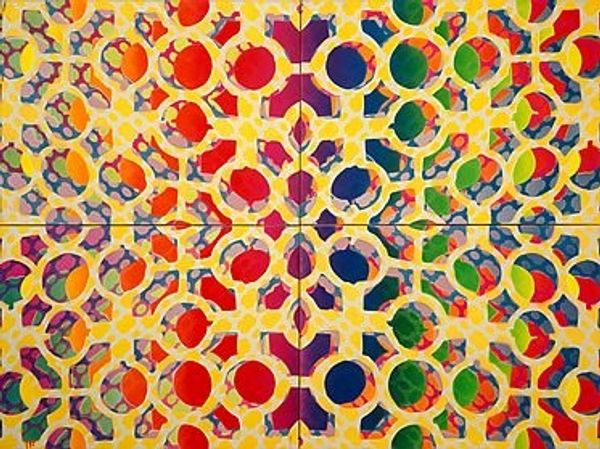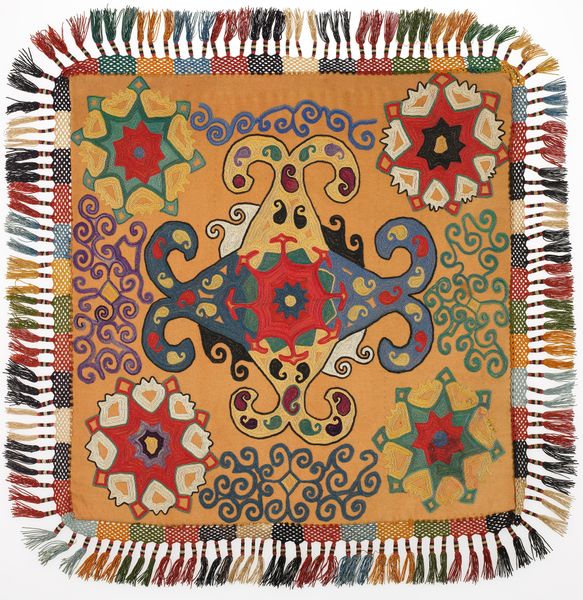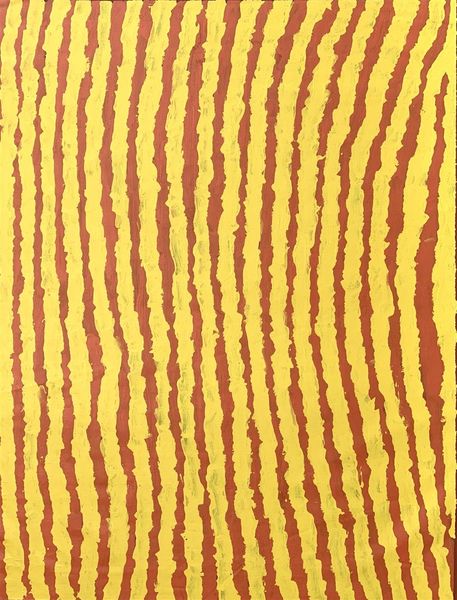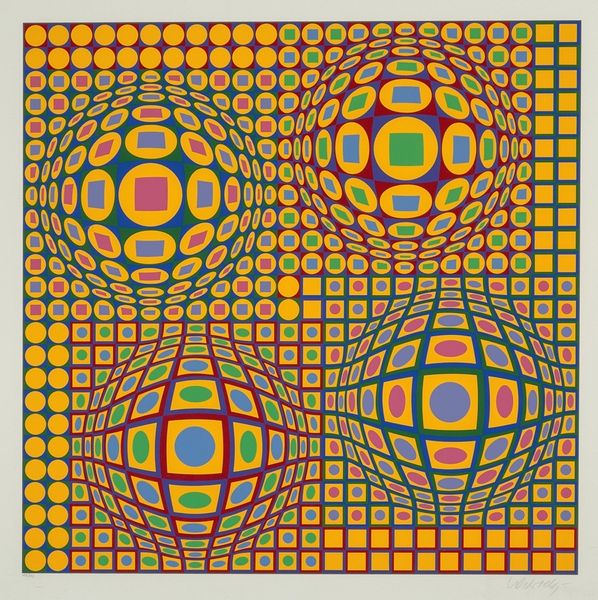
painting, acrylic-paint
#
painting
#
pattern
#
acrylic-paint
#
geometric
#
abstraction
#
modernism
#
hard-edge-painting
Copyright: John McCracken,Fair Use
Editor: This is an untitled acrylic painting by John McCracken, made in 1971. I'm struck by the boldness of the colours and the symmetry, almost like looking into a kaleidoscope. What visual elements stand out to you in this piece? Curator: Immediately, the radial symmetry compels attention. It presents as a formalized, geometric pattern, tightly controlled within the square format. The interaction of colours – note the strategic juxtaposition of red, yellow, and a muted violet against stark black outlines – generates visual tension and a kind of pulsating energy. The imperfections and slight deviations in the brushstrokes are significant too. They introduce a human element, a disruption to perfect formalism. Editor: So, the apparent imperfections are deliberate? Curator: Perhaps. Or perhaps they point to the inherent limitations of applying strict geometry and hard-edge painting to the visceral act of painting itself. The application of acrylic is rather flat, but the forms gain prominence by high colour contrasts. Do you see how the hard edge forms interplay and suggest perhaps the suggestion of depth in what is obviously a flat picture plane? Editor: Now that you point it out, I can. The lines definitely create an optical game for the viewer. But doesn’t this piece risk being *just* decorative with the kaleidoscopic aspect? Curator: Decoration is not inherently devoid of meaning. I'd argue that McCracken, working within the Hard-Edge movement, uses the visual language of geometry and colour to explore the very essence of visual perception and spatial relationships, even on the canvas margins where other forms and lines echo. One might say McCracken explores painting as pure optical experience. Editor: That's fascinating. I hadn’t considered the formal tension as a means of engaging with the pure aesthetics of painting itself. Curator: Indeed. This concentrated focus truly enriches our experience of the painting and reveals some fascinating methods in McCracken’s work.
Comments
No comments
Be the first to comment and join the conversation on the ultimate creative platform.
